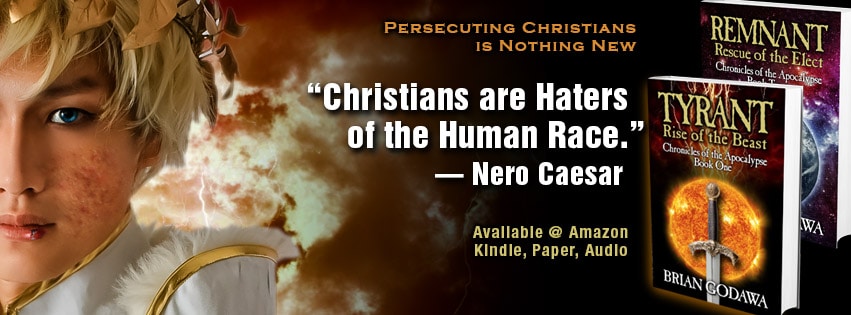I like good supernatural stories, especially stories that promote an accurate worldview. So imagine my delight when reading a supernatural story with an accurate worldview that includes some characters who occasionally can see into the spirit realm: Tyrant: Rise of the Beast, by Brian Godawa. You can read the first chapter for free here.
Clash of Worldviews
As discussed here, a worldview is a perspective on reality that someone holds, often subconsciously. It’s the filter through which people perceive and interpret reality; a bad worldview will result in inaccurate conclusions about reality, although the person will assume the inaccurate conclusions are true. On some levels, true repentance means changing your worldview to something closer to Truth: the ideas about the world that Jesus held.
Stories are told from particular worldviews. Brian Godawa has taught me that good stories entail a clash of different worldviews held by different characters. I’ll offer more on that in a later post.
Brian is one of the co-hosts (along with me) on the Peeranormal podcast. I first heard of him a few years ago while researching the Genesis Flood, when he released the Chronicles of the Nephilim series, starting with Noah Primeval.
This series is basically fantasy/supernatural fiction based on the Bible. It’s a speculative retelling of certain biblical events that embraces the supernatural mindset and cosmology of the biblical writers. The stories are a blast! Well… at times a blast, but other times they are horrifying… what some spirit entities have done to people is utterly depraved. I’ve only read the first two books so far, and they are moving story telling.
Tyrant: Rise of the Beast
Earlier this year, Brian released Tyrant: Rise of the Beast, which is about some of Nero’s actions after the Great Fire of Rome, told through a couple of engaging characters. Okay, the book is about so much more than that, but a couple of elements to the story really surprised me.
First, a couple of the characters are seers, at least some of the times. The narrator calls them “sensitives”, and then describes what it is they see: the spiritual personalities behind the actions of some of the characters.
What really struck me is how closely the narrator’s descriptions match what many seers have told me they sometimes see in the spirit realm. Brian’s writing compellingly layers in the spiritual to the physical in convincing ways, and some of his human characters can actually see both sides. Of course, some of the spiritual characters can clearly see (and engage) both sides too, rather chillingly.
Aside from this convincing backdrop, Brian weaves a moving story that follows the assignment Nero gives some of the characters.
The second surprising element, which may challenge some readers, is the use of footnotes. Brian’s telling of these events, which are rooted in real history, may challenge some readers who are conversant in various End Time theories, and the footnotes direct the readers to mainly original sources justifying the story points.
Something like a third of the book are the end notes. Being an original sources nerd, I enjoyed the notes, although they represented the author interrupting the narrative.
If you’ve read Dune or The Lord of the Rings, imagine if the author inserted footnotes referring to various notes in the Appendixes of those books. Since Tyrant is based on historical events, however, the use of footnotes – especially for some of the more jarring occurrences – is justified. I mean, did Nero really use Christians as human torches in his garden? Look at the notes to see.
The book tells a breathtaking story, seamlessly weaving the supernatural and natural together. Many modern seers will find the narrative speaks to what they regularly see, and all readers should find the events compelling and moving.
The first chapter is available for free here.


Leave a Reply